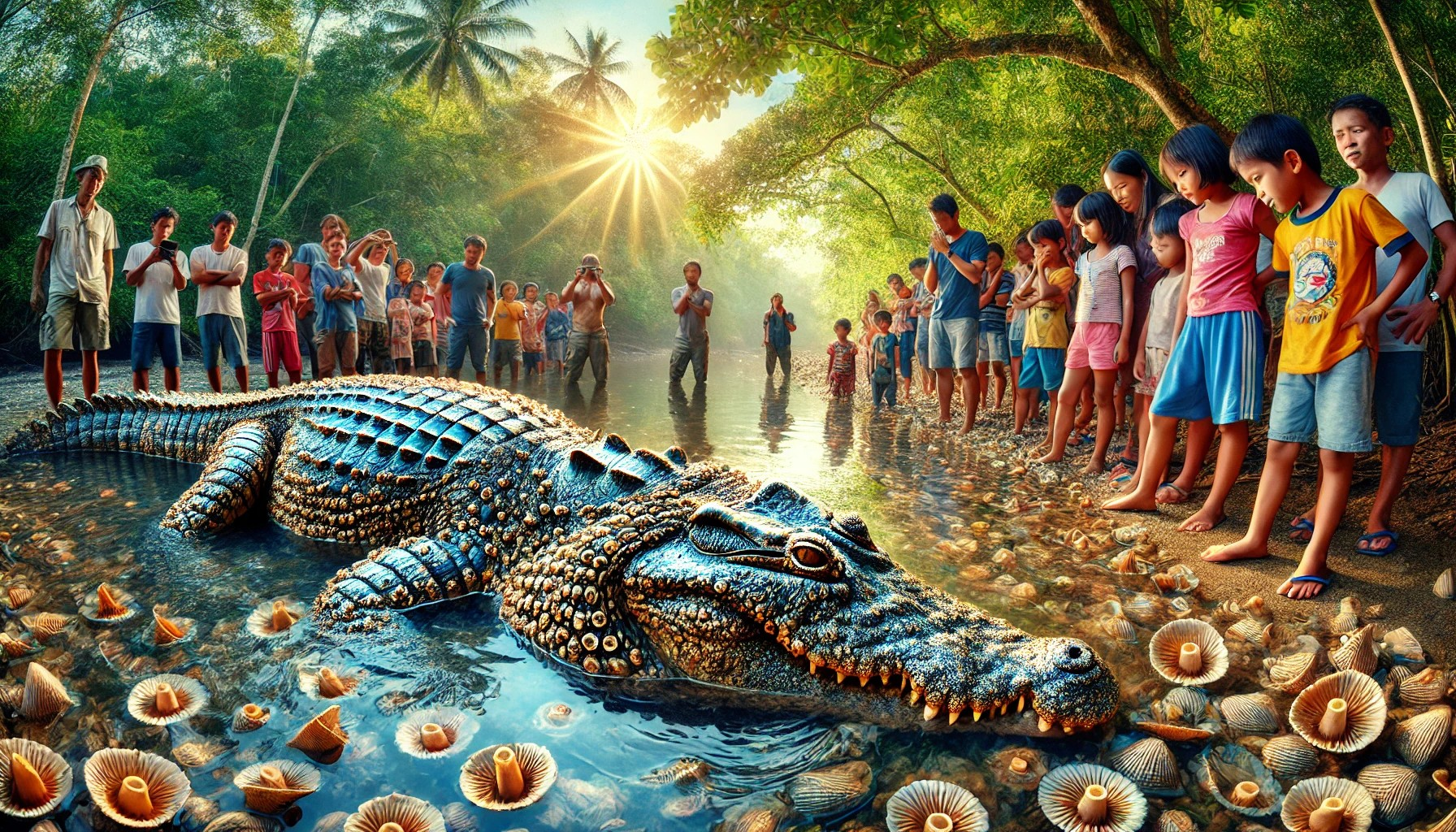Rare Barnacle-Encrusted Crocodile Found by Kids in the Philippines
In an extraordinary encounter, children in the Philippines stumbled upon a barnacle-encrusted crocodile, sparking fascination and excitement among locals and wildlife experts. The discovery, considered a “very rare” occurrence, has drawn attention to the diverse and sometimes surprising wildlife that inhabits the region.
The children, who were playing near a river in a rural area, noticed the unusual sight of a large crocodile partially covered in barnacles. Startled but curious, they quickly informed local authorities. Wildlife experts were dispatched to the scene to assess the situation and ensure the safety of both the animal and the local community.
The crocodile, identified as a saltwater species, was found to be in a healthy condition despite the presence of barnacles on its skin. Experts suggest that the barnacles, which are more commonly associated with marine environments, attached to the crocodile while it spent time in saltwater or brackish environments. This phenomenon, though rare, can occur when marine creatures like barnacles come into contact with reptiles that occasionally venture into coastal areas.
Wildlife biologist Dr. Elena Ramos, who examined the crocodile, described the find as “remarkable” and a testament to the resilience and adaptability of these ancient creatures. “It’s not common to see barnacles on crocodiles, which makes this encounter particularly unique,” Dr. Ramos explained. “This crocodile’s journey has likely taken it through diverse habitats, allowing these barnacles to attach and grow.”
The discovery has generated significant interest in the local community, with many residents flocking to see the crocodile. While such interactions between humans and wildlife can be risky, the event has been managed carefully to ensure the crocodile’s safety and well-being, as well as public safety.
Local conservation groups have used this rare encounter as an educational opportunity, raising awareness about the importance of preserving wildlife habitats and understanding the behaviors of crocodiles. They emphasize the need for coexistence with these creatures, which are a vital part of the region’s ecosystem.
The incident also highlights the broader environmental context in which these animals live. Changes in habitat, water quality, and human encroachment can influence the behavior and health of wildlife. Conservationists are advocating for stronger measures to protect natural habitats and promote sustainable practices that minimize human-wildlife conflict.
This unusual sighting has not only captivated the local community but has also drawn interest from wildlife enthusiasts and researchers globally. It serves as a reminder of the rich biodiversity of the Philippines and the importance of protecting its unique wildlife.
The crocodile has since been safely relocated to a protected area where it can live without human interference. This encounter will be remembered as a rare and educational experience, underscoring the wonders of nature and the need to respect and preserve the environment. The children’s discovery has sparked a deeper curiosity and appreciation for the natural world, reminding us all of the incredible stories that lie hidden within our ecosystems.

